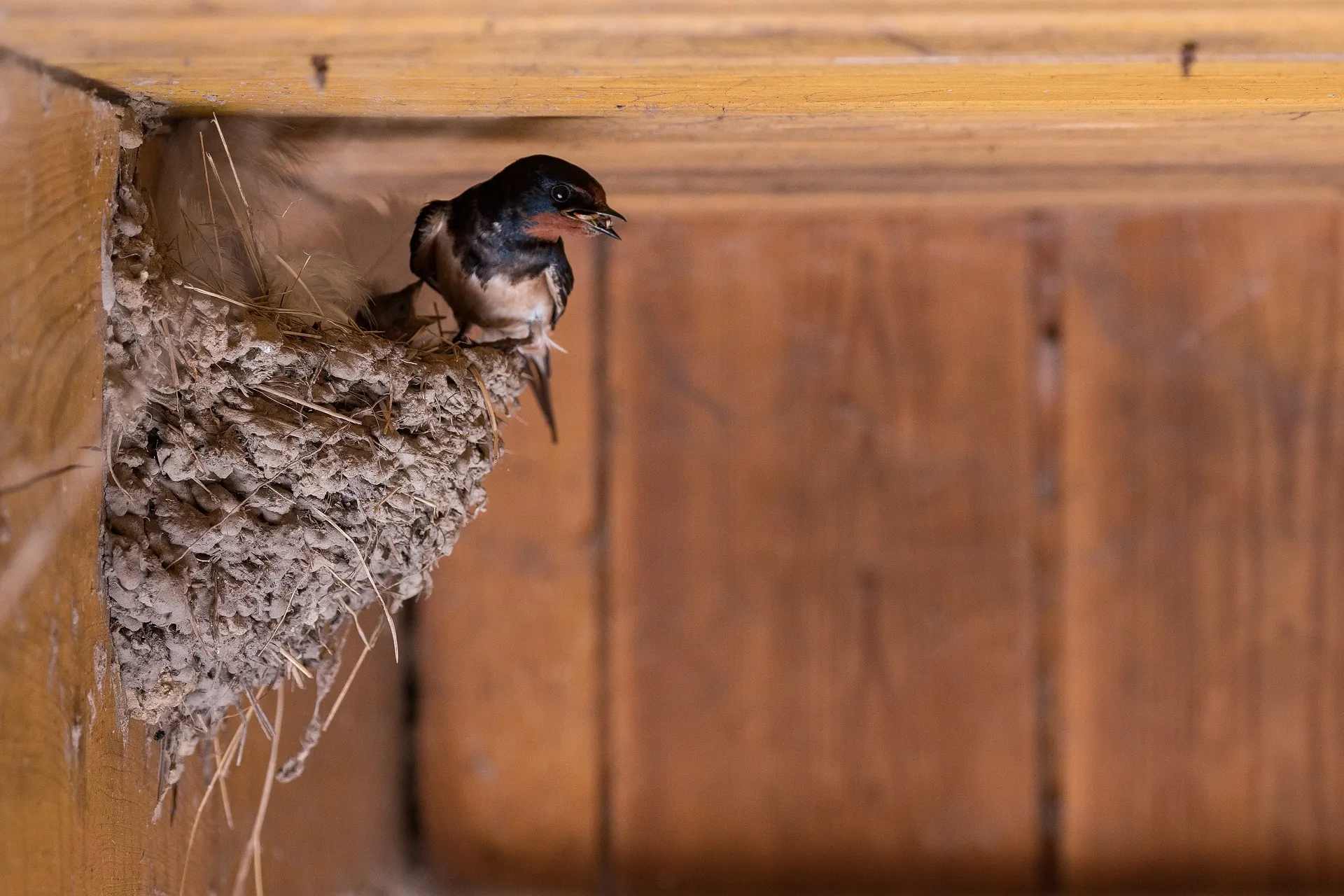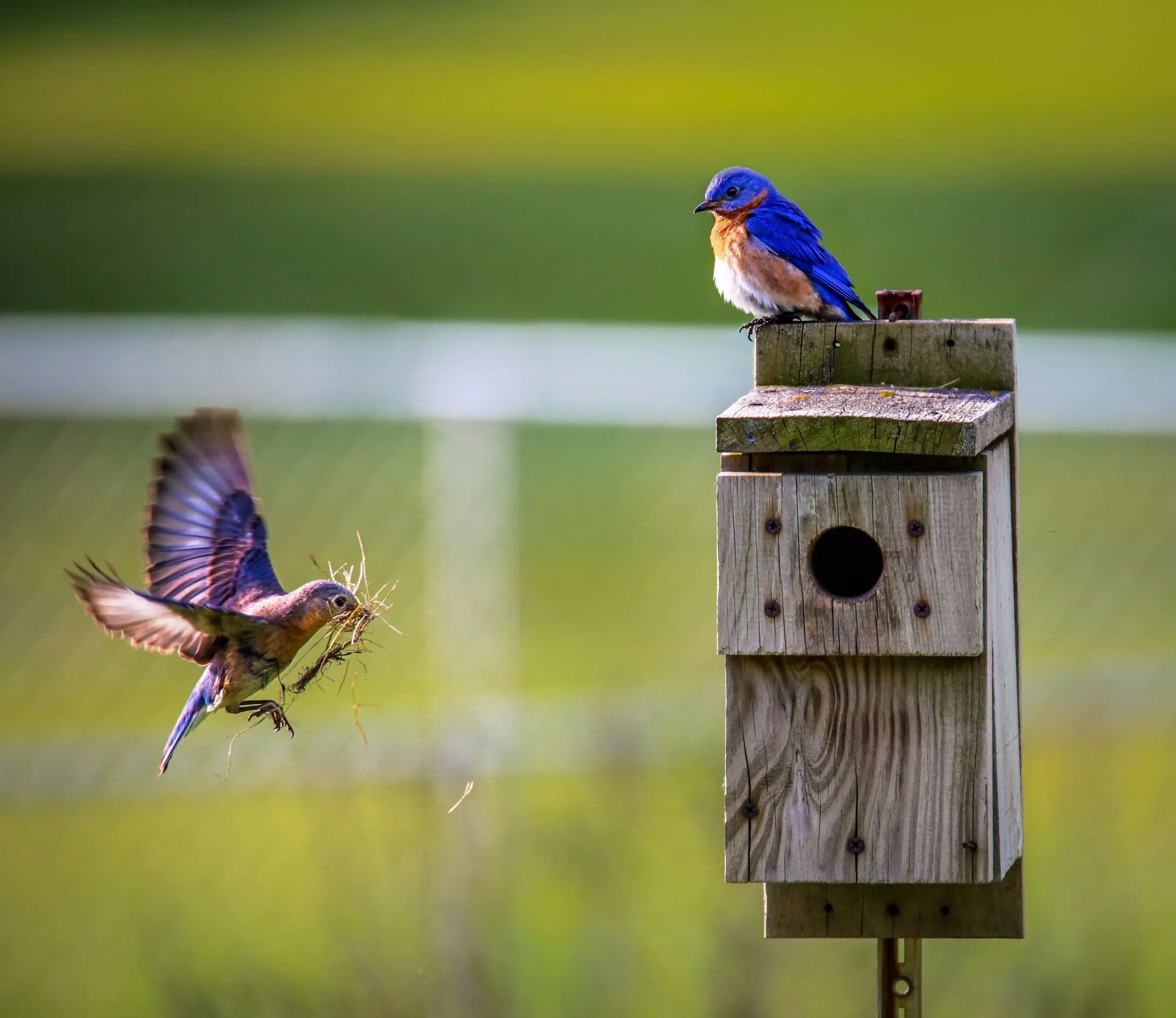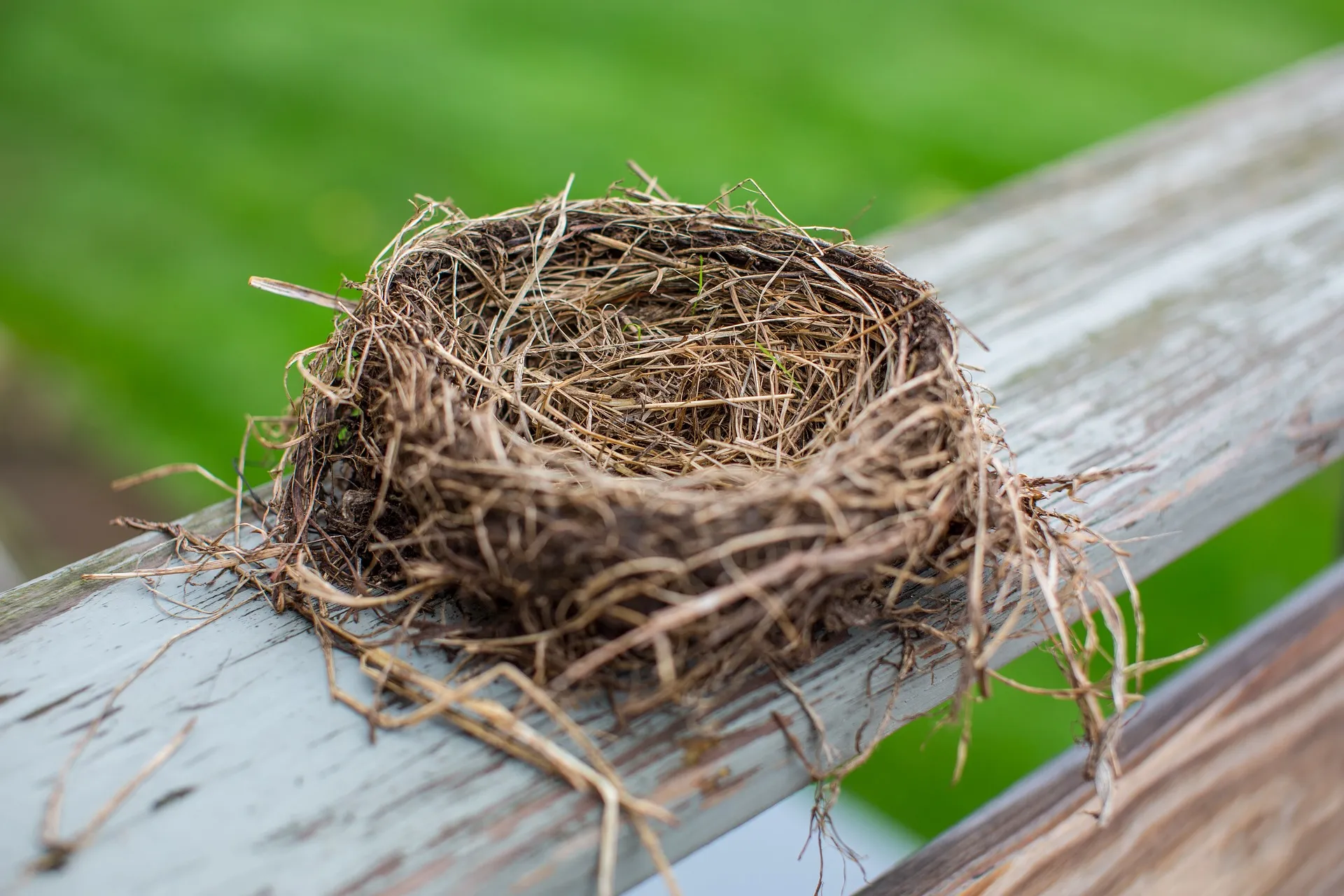Bird nesting season brings a new level of natural activity to our surroundings, and while most of us appreciate the beauty of wildlife, discovering a bird’s nest in an inconvenient spot around your home can be less than ideal. Whether it’s under your eaves, in a ventilation duct, or another sheltered nook, managing these avian visitors becomes a priority for homeowners, especially those with pets. Understanding How To Stop Birds From Building Nests on your house effectively and humanely is crucial for maintaining your property and ensuring the well-being of both your family and local bird populations. This guide, drawing on insights from wildlife experts, offers practical, wildlife-friendly solutions to deter nesting birds and advises on what to do should you find an existing nest.
Why Preventing Birds from Nesting on Your Home Matters
While the sight of baby birds can be enchanting, a bird’s nest on your house isn’t always beneficial for your property or for the birds themselves. Nests are often untidy, with nesting birds dropping sticks, leaves, and other debris. Accumulations of feathers, discarded food, and feces can also create unwanted messes directly beneath the nest. More critically, nests can obstruct or clog vital home systems such as ventilation shafts, plumbing, HVAC areas, and gutters, potentially leading to costly damage or efficiency issues.
 A swallow perches on a nest under a house, highlighting common nesting locations
A swallow perches on a nest under a house, highlighting common nesting locations
Furthermore, nesting birds are inherently territorial and protective of their young. This natural instinct can lead to defensive behaviors, such as swooping at unsuspecting guests or family members who inadvertently approach a nesting site on your front porch or other high-traffic areas. Beyond the inconvenience, there’s also a significant danger to the birds themselves. Predators like neighborhood cats, or even simple human foot traffic, can easily disrupt a nest, posing a fatal threat to delicate eggs and fledgling birds. Given recent studies revealing a staggering 3 billion bird loss in North America over the past five decades, and 70 US bird species facing critical declines, it’s imperative that we find solutions that both protect our homes and support the conservation of wild birds.
Wildlife-Friendly Strategies to Deter Nesting Birds
Fortunately, there are numerous humane and wildlife-friendly methods to prevent birds from establishing nests on your property. Implementing these preventative measures before nesting season is in full swing can save you hassle and protect local bird species.
Seal Entry Points and Cavities
Cavity-nesting birds, such as Western Bluebirds, Bewick’s Wrens, and Western Screech Owls, naturally seek out snug, enclosed spaces to build their nests. A simple and effective deterrent is to identify and seal any potential entry points around your home. This includes chimneys, exposed pipes, dryer vents, and any other small holes or gaps. By blocking these areas with boards, appropriate netting, or other robust barriers, you can prevent birds from accessing and utilizing them as nesting sites. This method redirects birds to more suitable natural locations without causing them harm.
 Two Western Bluebirds prepare a nest box for the nesting season outside, an alternative nesting spot.
Two Western Bluebirds prepare a nest box for the nesting season outside, an alternative nesting spot.
Install Bird Spikes
Bird spikes are a common and effective deterrent often misunderstood by those unfamiliar with them. These devices consist of small, blunt, needle-like rods that extend from a base. Crucially, these rods are designed to be dull and will not injure birds; instead, they create an uneven surface that makes it uncomfortable or impossible for birds to perch or build a nest. Bird spikes can be strategically placed on railings, ledges, under eaves, and any other flat surfaces that birds might consider as potential nesting spots. They offer a long-term solution by physically preventing birds from landing in unwanted areas.
Utilize Visual and Auditory Deterrents
The movement and sound generated by wind chimes can be effective in deterring birds from potential nesting locations, particularly if the chimes are made from reflective metal or other shiny materials that catch the light. Holographic scare tape works on a similar principle, creating dazzling reflections and fluttering movements that birds find disorienting and unsettling. However, it’s important to note that birds are intelligent and highly adaptable creatures. Over time, they may become accustomed to these visual and auditory deterrents, reducing their effectiveness as a long-term solution for persistent nesters. Regular relocation or combination with other methods might be necessary for sustained deterrence.
 A swallow bird, often seen nesting around human structures.
A swallow bird, often seen nesting around human structures.
Employ Motion-Activated Strobe Lights
Flashes of bright light can be a highly effective and bird-friendly method for deterring nesting birds from a specific area. Installing motion-activated strobe lights ensures that the deterrent is only active when a bird approaches, conserving energy and preventing birds from becoming accustomed to a constant presence. Both the sudden bright light and the shadows it creates serve to startle and keep birds away, making an area undesirable for nesting without causing any physical harm. This is particularly useful for areas that are difficult to secure with physical barriers.
Provide Alternative Nesting Locations
One of the most compassionate and effective ways to deter birds from nesting on your house is to offer them more suitable alternative nesting spots. Creating attractive habitats in your backyard, such as dense bushes, trees, or brush piles, can provide ideal and safer places for birds to raise their young. If you haven’t yet completed your spring yard cleaning, consider postponing it until the nesting season is over to allow birds to utilize any natural brush. Additionally, hanging a bird house or nest box in a sheltered part of your outdoor space, away from heavy foot and street traffic and high enough to be safe from potential predators, can provide a dedicated and welcome home for local bird species.
What to Do When You Discover a Bird’s Nest
Finding a bird’s nest on your property requires careful consideration and knowledge of local wildlife protection laws. It’s crucial to act responsibly to protect both your home and the birds.
Understand Legal Protections
Before attempting to disturb or remove any bird’s nest, it is essential to understand that most bird species in the United States are protected under the Migratory Bird Treaty Act of 1918. This federal law makes it illegal to move, disturb, or destroy an active bird’s nest—meaning one that contains eggs or chicks—without proper authorization. Violating this act can lead to significant penalties. Therefore, your first step should always be to research the species and confirm if the nest is active.
Observe and Wait if Possible
If the nest is situated in a location that is not causing immediate harm to your home and is not an immediate nuisance, the most responsible course of action is often to leave it undisturbed until the nesting season concludes. This typically means waiting until you observe signs of inactivity for a period of about a week or so. By allowing the birds to complete their nesting cycle, you are acting as a good steward of local wildlife, providing a safe haven for them to shelter and raise their young. Patience in these situations ensures the best outcome for the birds.
Monitor for Inactivity
If you are considering removing a nest, it is vital to first confirm that it is no longer active. Carefully observe the nest from a safe and respectful distance for several days. Look for signs of activity, such as adult birds flying to and from the nest to incubate eggs or feed and care for their young. If there is no discernible activity over this period, it is likely that the nest has been abandoned, or the young have fledged. (Please note: some songbird species may nest multiple times within a single nesting season, from spring through fall, so if the nest is in a safe and unobtrusive spot, it’s often best to leave it until the season definitively ends to avoid any disruption.)
Safely Removing an Abandoned Bird’s Nest
Once you have definitively determined that a bird’s nest is empty, inactive, and can be lawfully removed, you can proceed with a few simple steps to clear the area and prevent future nesting.
- Wear Protective Gloves: Always don protective gloves to ensure hygiene and protect your hands from any potential irritants or parasites that might be present in the nest material.
- Check for Contents: Without directly touching the nest, carefully inspect it from a close distance to double-check for any hidden eggs or chicks. Confirming it is truly empty is critical.
- Remove the Nest: Gently detach the nest from its location. You can place the removed nest materials in your compost pile, where they will naturally decompose, or in a securely sealed trash receptacle for disposal.
- Clean the Area: Thoroughly clean the nesting site with a solution of bleach and water. This step is important for sanitation, removing any lingering odors or residues, and discouraging future nesting in the exact same spot.
- Deter Future Nesting: To prevent birds from rebuilding in the same location, consider implementing one of the preventative measures discussed earlier. Blocking the area with netting or installing wildlife-friendly bird deterrents like bird spikes can be highly effective.
 An empty bird nest on a fence, ready for safe removal.
An empty bird nest on a fence, ready for safe removal.
Managing bird nests around your home requires a balanced approach that respects wildlife while protecting your property. By understanding why birds nest where they do, implementing humane deterrents, and knowing the proper steps to take when a nest is found, you can maintain a harmonious environment for both your family and the natural world. For more valuable information on caring for your pets and supporting local wildlife, explore our “Dog Care Story” blog and resources.
